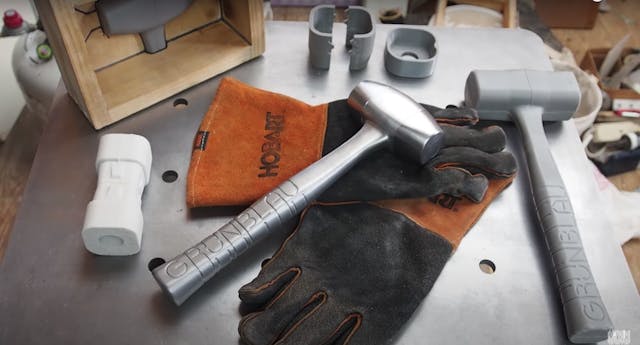There’s more than one way to make a hammer—at least three, in fact
YouTube has no shortage of instructional videos from craftsmen around the world, and I always find it fascinating to learn how various makers approach fabricating tools in their own ways.
Take something as simple as a hammer. It’s one of the most basic tools, and yet there are a number of distinct manufacturing methods that you could use to turn out a suitable product. Below are three totally different ways a hammer can be made that I found completely enthralling.
Aside from their entertainment value, these videos can open up new possibilities when planning your own projects. Even if the construction methods lie outside your current skill set, watching something useful materialize from its raw components demystifies the fabrication process and offers a chance to learn which method might suit your level of experience.
Adam Savage is one of my favorite makers on YouTube. He explains his thought and design processes, shares his favorite methods and tools, and isn’t afraid to teach by showing his own mistakes. His One Day Builds are among the best on his channel and typically cover builds from start to finish. For one of his latest builds, he makes a hammer to replace a favorite tool that he has misplaced.
Savage has a mill and a lathe, plus a well-stocked shop that is likely the envy of any hobbyist and makes the process much easier for him than it would be for most tinkerers. (Alternatively, you could argue that a mill is just a fancy drill press.) Adam himself reminds his viewers that you only need some metal stock and a file to get a rough cut of your preferred hammer head.
After he turned the brass stock into a tapered barrel shape, Savage paired it with a slender hardwood handle. The first handle is a bit too slender, in fact, but Savage makes some adjustments and the final hammer proves to be an appropriately sturdy, useful tool.
Another great channel highlights the blacksmithing and metal forging abilities of Alec Steele. Starting with a two-pound billet of steel, Alec forges a hammer head using a hammer, a pair of punches, his anvil, and … well, a forge.
Besides removing stock and banging it around, you have at least two more options for creating a basic hammer shape. Brian Oltrogge’s cast aluminum and lead hammer uses additive manufacturing and casting. His resulting creation is practically a masterpiece. It’s far nicer than any tool I own, by far, and the design and construction are equally inspiring. Whenever I watch this video, I immediately want to go out and buy a 3D printer, fire up my charcoal forge, and cast some aluminum.
Let’s use these three examples as a jumping-off point. Are there any homemade tools of your own creation—or perhaps some that have been handed down to you—you’re particularly fond of? Let us know in the comments.


